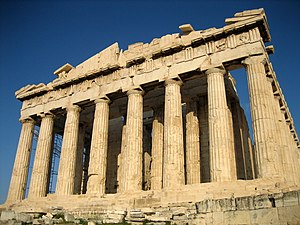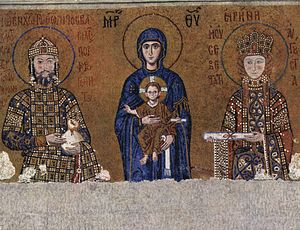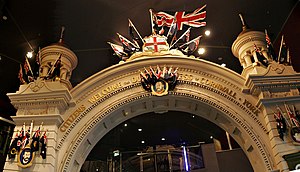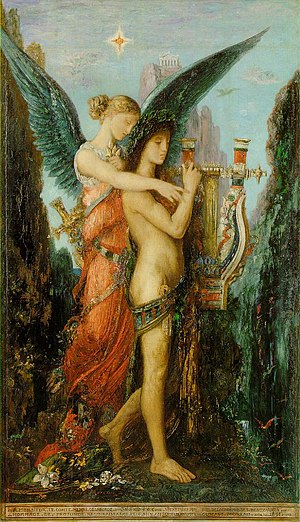 Image via Wikipedia
Image via WikipediaWhen Sundays roll around for you, I like to post a seminar based on my class, CHRN/AUG 100, which is the University's Introduction to Anachronism. Here's this week's edition.
Last week we talked about mindset and how we use the emotional and cultural context of a mind to understand the sources that wrote it. That's kind of the small scale of the situation, though, because in the long run we're not just studying individuals but trends in society over time and to some degree we're even creating predictive models.
To do this, we need to think about the motivations of various people and groups of people around time. I like to think of it as sort of examining a cultural fossil record. In paleontology, when you find successive organisms with specifc body plans that are shared, you gradually develop "taxa," or groups of different species that form up a branch of the Tree of Life. Those groups, like "dinosaurs" or "birds" have certain shared characteristics. There is what I would call a certain resonance between their physical forms which arise in common over time.
Similarly, there are shared mindsets that arise in the data from augury, both when you move forward in time and when you look across concurrent time streams. People resonate their beliefs. A good example from your time stream to consider would be the sudden surge of support for Barack Obama prior to his election. This happened because many people out there had a mindset that agreed with Obama and when he began to broadcast his views, these ideas resonated with an untapped aspect of the American, and even the global, mindset. The collective consciouness vibrated to the beat of his drum.
Another example comes from World War II, when around the world there was a flocking on people with like mindsets to two prevailing systems of government: the Free Society and the Fascist Society. Hitler and Mussolini did not help each other to power; they formed their own groups of mindsets, from people who resonated with their viewpoints. Then, when they had come to power, they met each other and felt that same resonance in themselves. A dark alliance, the Axis, took root. Resonance can sometimes be a bad thing.
But it is through resonance that ideas and trends in ideas begin. Movements and revolutions are born on the backs of mindsets that resonate with one another. It starts small, but then can snowball into significant trends. Much of my time is spent trying to determine what the critical mass is for an idea to resonate across all of a geographic location or time stream, and to echo into the future. Even more of my time is spent looking for situations where different time streams resonate so strongly with each other that despite their temporal separation, they share a possible future! By the power of the mind alone, sentient beings can bend probabilities to create something nearly impossible.
That is resonance.
Always,
Dr. John Skylar
Chairman
Department of Anachronism
University of Constantinople
![Reblog this post [with Zemanta]](http://img.zemanta.com/reblog_e.png?x-id=89f488ac-d313-468b-98f7-0f7d5aae772b)


![Reblog this post [with Zemanta]](http://img.zemanta.com/reblog_e.png?x-id=565623c4-15a0-4486-8860-5a04ece31303)



![Reblog this post [with Zemanta]](http://img.zemanta.com/reblog_e.png?x-id=834c164c-d0be-4316-b70c-a48acba24bd4)


![Reblog this post [with Zemanta]](http://img.zemanta.com/reblog_e.png?x-id=5b4da966-6d1c-4539-9c3c-0be4602942e9)

![Reblog this post [with Zemanta]](http://img.zemanta.com/reblog_e.png?x-id=f69a00ec-5f81-4d01-95a5-6f82decb4752)


![Reblog this post [with Zemanta]](http://img.zemanta.com/reblog_e.png?x-id=b992a132-8932-4f5f-8106-bbc698bb1832)




![Reblog this post [with Zemanta]](http://img.zemanta.com/reblog_e.png?x-id=1c9e1822-966d-4b00-9332-f4c64b662903)





![Reblog this post [with Zemanta]](http://img.zemanta.com/reblog_e.png?x-id=ff5d9164-99da-47e6-980d-6f35b73a17b0)